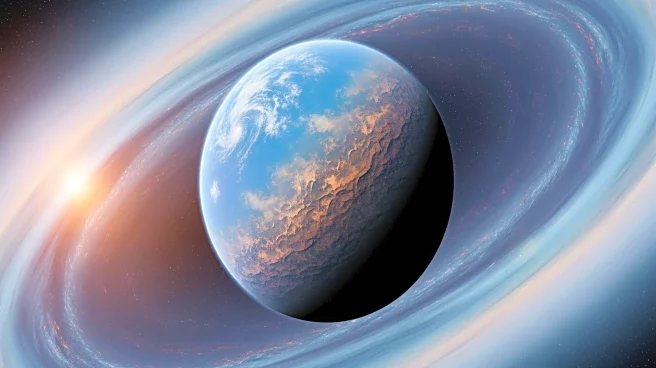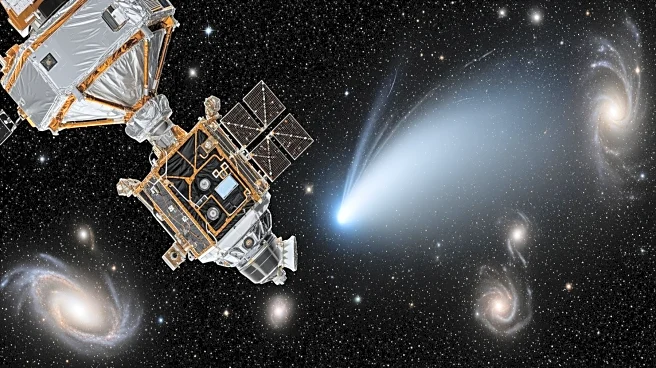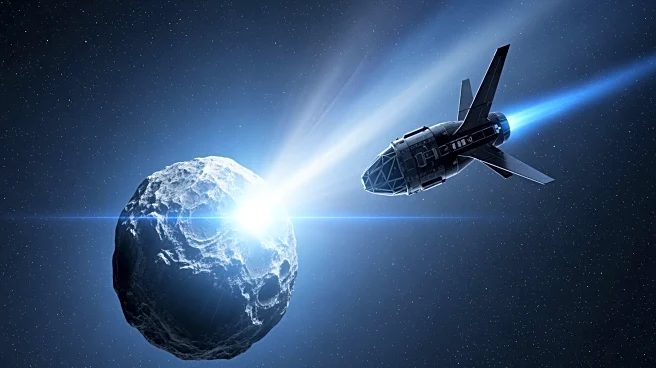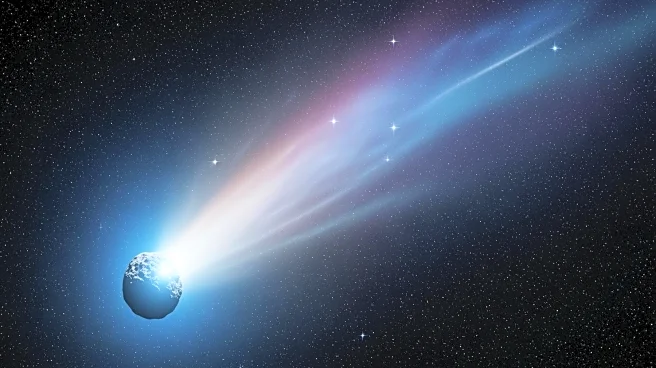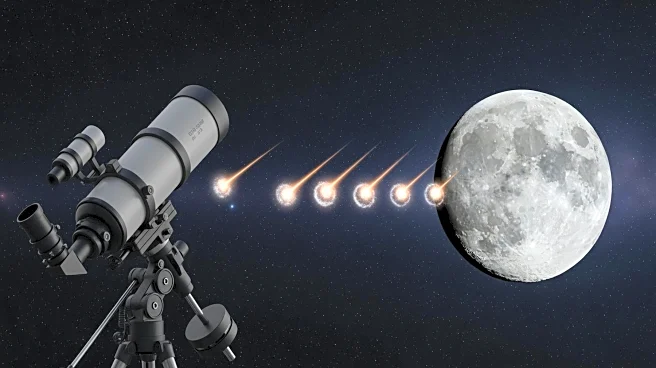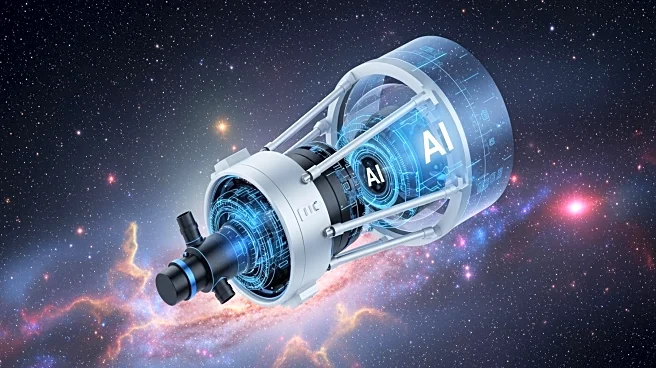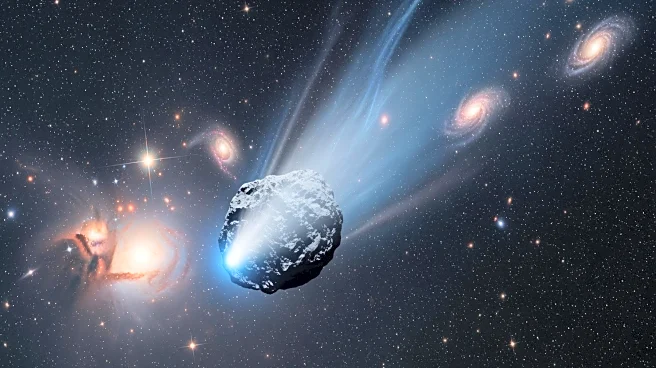What's Happening?
A recent study utilizing data from NASA's James Webb Space Telescope (JWST) has challenged long-standing assumptions about mini-Neptune exoplanets. These planets, which are smaller than Neptune but larger
than Earth, were previously thought to have global magma oceans due to their dense hydrogen-helium atmospheres. However, the JWST data indicates that these planets may have solid surfaces instead. The study found heavier molecules in the upper atmosphere of a mini-Neptune, suggesting that the atmosphere is thicker and more pressurized than previously believed. This pressure could force molten rock into a solid form, akin to carbon turning into diamond under high pressure, indicating that these planets might have solid rock surfaces rather than oceans of lava.
Why It's Important?
This discovery is significant as it challenges existing models of planetary formation and the assumption that other solar systems resemble our own. Understanding whether mini-Neptunes have solid or molten surfaces can provide insights into their surface chemistry, atmospheric behavior, and internal structure. This knowledge is crucial for categorizing exoplanets and refining the search for Earth-like planets. The findings could also influence where astronomers look for potentially habitable worlds, as the presence of solid surfaces may suggest different evolutionary paths for these planets. The study highlights the transformative impact of next-generation telescopes like the JWST in reshaping cosmic theories.
What's Next?
The implications of this discovery may lead to a reevaluation of planetary formation theories and the criteria used to identify potentially habitable exoplanets. Researchers may focus on further studying the atmospheric compositions and surface conditions of mini-Neptunes to better understand their characteristics. This could involve more detailed observations using the JWST and other advanced telescopes. Additionally, the findings may prompt scientists to explore new models for the evolution of rocky versus molten planets, potentially altering the strategies for searching for life beyond Earth.
Beyond the Headlines
The revelation that mini-Neptunes may have solid surfaces rather than magma oceans could have broader implications for understanding the diversity of planetary systems. It challenges the notion that all planets with thick atmospheres are necessarily molten, opening up new possibilities for the types of environments that might exist on these worlds. This could lead to a deeper exploration of the conditions necessary for life and the potential for unique ecosystems on planets previously deemed inhospitable.
